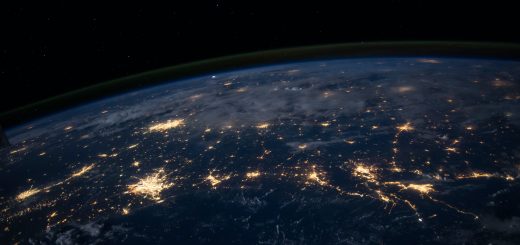How 3D Printing Will Change Food in 2025

Hey there, amazing readers! 🖐️ Just a quick note: yes, we know there are a lot of ads here. Trust us, we get it—it’s not the prettiest look, but they help us keep this blog alive and kicking. Those pesky little ads cover the costs of all the behind-the-scenes magic, from hosting and tech stuff to creating content we hope you’ll love.
We’re committed to delivering quality posts, and your support (even just sticking around despite the ads) means everything to us. So, bear with us, and thanks for helping us keep the good vibes rolling. Now, on to the fun stuff! 😉
TRANSLATE BUTTON AT THE END OF THE ARTICLE
A Quick Overview
3D printing has made waves in various industries, but food is one area where its potential is just beginning to shine.
By 2025, this technology promises to redefine how we eat, cook, and think about food.
Imagine a world where your meals are printed right before your eyes, designed for your dietary needs, and more sustainable than ever.
In this article, we’ll explore how 3D printing is set to change the culinary landscape in just a few years.
From personalized nutrition to less food waste, the future of food is looking bright and exciting!
Introduction: The Future of Food in 3D Printing
When I think about the future of food, my mind races with possibilities.
The idea of printing meals instead of cooking them might sound like science fiction, but the technology is already here.
By 2025, we’ll likely see shifts in traditional food preparation that could revolutionize our dining experiences.
With 3D printing, we can create foods that are not only delicious but also tailored to our specific dietary needs.
Imagine walking into a restaurant where you can choose your meal from a digital menu, and seconds later, it’s being printed at your table.
Think about how exciting it would be to customize every layer of your dish, from the texture to the flavor.
The culinary arts are about to get a huge upgrade, and I can’t wait to dive into how this technology will impact our diets and lifestyles.
What is 3D Printing and How Does It Work?
At its core, 3D printing is a fascinating technology that creates three-dimensional objects layer by layer.
The process starts with a digital blueprint, which serves as the foundation.
In the case of food, companies develop specific recipes that can be turned into designs.
Here’s how it typically works:
Design Creation: Chefs or food technologists create a digital design of a dish.
Material Selection: Edible materials such as pureed fruits, vegetables, dough, or proteins are chosen.
Layering Process: The printer then deposits these materials layer by layer, building the final product.
Some printers can even adjust temperatures and textures, making them versatile for various culinary creations.
This technology opens up endless opportunities for innovation in food preparation.
The Rise of 3D-Printed Food: A Culinary Revolution
The culinary world is on the brink of a real transformation. 3D-printed food is gaining traction for several reasons.
First, it allows chefs to create visually stunning dishes that were previously impossible.
Imagine intricate designs that look like art on a plate.
Additionally, food printing can simplify the cooking process.
Chefs can spend less time on labor-intensive tasks and more time experimenting with flavors and combinations.
We’re already seeing restaurants start to embrace this technology.
Some early adopters have even reported a significant reduction in preparation time, taking away the stress of traditional cooking methods.
As more restaurants join the movement, 3D-printed food could become a staple in urban dining scenes.
How 3D Printing Enhances Nutritional Value of Meals
One of the most exciting aspects of 3D printing in food is its potential to enhance nutritional profiles.
By using precise measurements and ingredients, we can create meals that meet specific dietary requirements.
For instance, consider individuals with dietary restrictions.
Whether someone is gluten-free, vegan, or diabetic, 3D printing can accommodate their needs.
Here’s how it contributes to nutrition:
Precision: Exact amounts of vitamins and minerals can be incorporated into meals.
Ingredient Control: Chefs can select the healthiest ingredients tailored to individual preferences.
Custom Recipes: Instead of guessing nutritional content, printed food can be engineered to meet daily requirements.
By 2025, I envision a world where nutritionists collaborate with chefs to create customized meal plans that enhance health and wellness.
Customization: Tailoring Food to Individual Preferences
Customization is the name of the game.
In the age of personalization, why should our food be any different? 3D printing lets us design meals that suit our tastes, preferences, and dietary needs.
Imagine being able to control:
Flavor: Choose your favorite spices and ingredients.
Texture: Control the mouthfeel of sauces, doughs, and more.
Appearance: Design a meal that’s not just delicious but also Instagram-worthy.
This level of personalization makes dining an experience rather than just a necessity.
We’ll be able to impress friends and family with dishes that can reflect personal stories and individual tastes.
Sustainability: Reducing Food Waste with 3D Printing
Food waste is a global crisis, and 3D printing can play a significant role in addressing it.
Traditional food production generates tons of waste, whether it’s from unsold products or excess ingredients.
3D printing could mitigate this issue in several ways:
Ingredient Utilization: Everything can be used, from scraps to surplus materials.
On-Demand Production: Food can be printed as needed, decreasing overproduction.
Localized Food Creation: Reduced transportation means less environmental impact.
By printing food on-demand, we could dramatically reduce waste and promote more sustainable practices in the industry.
Each meal could be crafted with minimal environmental footprint.
The Role of 3D Printing in Food Safety and Hygiene
Food safety is a top priority in any kitchen.
With 3D printing, we can introduce better practices to ensure hygiene.
Traditional kitchens deal with cross-contamination and the challenges of food storage.
Here’s how 3D printing enhances safety:
Controlled Environment: Food is printed in sterile conditions, minimizing contamination.
Precise Ingredients: Ingredients can be sourced and tracked, ensuring quality.
Easy Cleaning: Many 3D printers are designed for easy disassembly and cleaning.
By 2025, I believe we’ll see a significant shift in health standards driven by this technology.
With an increased focus on safety, we can enjoy our meals with peace of mind.
3D Printing in Restaurants: A New Dining Experience
Dining out is about more than just food; it’s an experience.
Imagine walking into a restaurant where your meal is crafted right before your eyes.
Restaurants that adopt 3D printing can offer:
Interactive Dining: Guests can participate in the printing process, making it entertaining.
Unique Menus: Each visit can bring new and exciting dishes that are custom-crafted.
Showcases of Creativity: Chefs can experiment and present avant-garde cuisine.
This could lead to a new era of culinary art, where dining is not just about eating but also about experiencing the magic of creation.
Home Cooking: Empowering Chefs with 3D Food Printers
While restaurants will undoubtedly benefit, home cooks can also reap the rewards of 3D printing.
Imagine having a compact printer in your kitchen that can whip up meals in minutes.
Home cooking with 3D printers can offer:
Convenience: Quick meals with less preparation time.
Educational Experiences: Families can learn about nutrition and cooking together.
Creativity: Experiment with flavors and designs without the fear of failure.
By 2025, home 3D food printers could become common appliances, empowering us to become our own chefs, creating meals that are healthy and delicious.
The Impact on Food Supply Chains and Production
3D printing holds the potential to disrupt food supply chains.
By producing food on-demand, we can change how food reaches our tables.
Consider the benefits:
Local Production: Food can be produced closer to consumers, reducing transportation.
Less Reliance on Agriculture: Urban spaces could thrive with food printers, decreasing dependence on traditional farming.
Resilience in Crises: In times of disaster, 3D food printers can provide essential nutrition quickly.
The future of our food systems could be more sustainable, efficient, and adaptable.
Challenges Ahead: Overcoming Barriers in Food Printing
While the future shines brightly, challenges remain. 3D printing in food is still in its infancy, and several hurdles need addressing:
Regulatory Standards: Governments need to create guidelines for food safety and quality.
Public Acceptance: Some may be hesitant to embrace this new technology.
Technical Limitations: Current printers may need improvements to handle diverse ingredients effectively.
By 2025, overcoming these obstacles will be crucial for widespread adoption.
As we address these challenges, we can pave the way for a successful culinary revolution.
Conclusion: Embracing a Tasty Future with 3D Printing
As I look forward to 2025, the promise of 3D printing in food excites me.
From personalized nutrition to sustainable practices, this technology holds the key to a more delicious, healthy, and eco-friendly future.
The culinary world is about to embark on an adventure, and I can’t wait to see what innovative chefs and home cooks will create.
Let’s embrace this tasty future together, where food is not just a meal but a masterpiece waiting to be printed.
Here’s to a world where eating becomes a delightful experience, tailored just for us!

The Enlightenment Journey is a remarkable collection of writings authored by a distinguished group of experts in the fields of spirituality, new age, and esoteric knowledge.
This anthology features a diverse assembly of well-experienced authors who bring their profound insights and credible perspectives to the forefront.
Each contributor possesses a wealth of knowledge and wisdom, making them authorities in their respective domains.
Together, they offer readers a transformative journey into the realms of spiritual growth, self-discovery, and esoteric enlightenment.
The Enlightenment Journey is a testament to the collective expertise of these luminaries, providing readers with a rich tapestry of ideas and information to illuminate their spiritual path.
Our Diverse Expertise 🌟
While our primary focus is on spirituality and esotericism, we are equally passionate about exploring a wide range of other topics and niches 🌍📚. Our experienced team is dedicated to delivering high-quality, informative content across various subjects ✨.
To ensure we provide the most accurate and valuable insights, we collaborate with trusted experts in their respective domains 🧑🏫👩🏫. This allows us to offer well-rounded perspectives and knowledge to our readers.
Our blog originally focused on spirituality and metaphysics, but we’ve since expanded to cover a wide range of niches. Don’t worry—we continue to publish a lot of articles on spirituality! Frequently visit our blog to explore our diverse content and stay tuned for more insightful reads.





